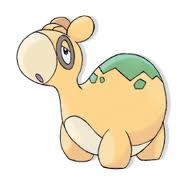Просмотрите текст еще раз. дайте ответы на вопросы, используя информацию текста. 1. what represents the functional organization of a computer? 2. what can we get by studying the functional organization? 3. what is the function of the input device? 4. what does mem ory serve for? 5. what is the task of the arithmetic-logical unit? 6. what is the function of the output? 7. what is the main pur pose of the control unit? 8. how do all units of the computer communicate with each other? 9. what is the additional job of the input? 10. what is the additional function of the output? вот сам текст: as we know, all computer operations can be grouped into five functional categories. the method in which these five functional categories are related to one another represents the functional organization of a digital computer. by studying the functional organization, a broad view of the computer is received. the five major functional units of a digital computer are: 1) input— to insert outside information into the machine; 2) storage or memory — to store information and make it avail able at the appropriate time; 3) arithmetic-logical unit — to perform the calculations; 4) output — to remove data from the machine to the outside world and 5) control unit — to cause all parts of a computer to act as a team. figure 5 shows how the five functional units of the computer act together. a complete set of instructions and data are usually fed through the input equipment to the memory where they are stored. each instruction is then fed to the control unit. the control unit interprets the instructions and issues commands to the other functional units to cause operations to be performed on the data. arithmetic operations are performed in the arithmetic-logical unit, and the results are then fed back to the memогу. information may be fed from either the arithmetic unit or the memory through the output equipment to the outside world. the five units of the computer must communicate with each other. they can do this by means of a machine language which uses a code composed of combinations of electric pulses. these pulse combinations are usually represented by zeros and ones, where the one may be a pulse and the zero — a no-pulse. numbers are communicated between one unit and another by means of these one-zero or pulse — no-pulse combinations. the input has the additional job of converting the information fed in by the operator into machine language. in other words, it transaltes from our language into the pulse — no-pulse combinations understandable to the computer. the output's additional job is converting the pulse — no-pulse combinations into a form understandable to us, such as a printed report.
229
458
Ответы на вопрос:
1go 2 went 3 will go 4 i don't go 5 i didn't go 6 i won't go 7 do you watch 8 did you watch 9 will you watch 10 when do you leave 11 when did you leave 12 when will you leave
Популярно: Английский язык
-
Объясните косвенную речь в языке и специальные вопросы. нужно ! : )...
 22222ssssssss29.08.2021 16:58
22222ssssssss29.08.2021 16:58 -
Write a short riview of any russian film that you like...
 dmoro24.02.2023 17:29
dmoro24.02.2023 17:29 -
Раскройте скобки, употребив глагол to be в форме нужного лица и времени....
 Zakharova200728.07.2022 22:43
Zakharova200728.07.2022 22:43 -
Переведите только со словом рисовать ...
 WaRRiOPRO23.11.2021 18:01
WaRRiOPRO23.11.2021 18:01 -
Jane: can you meet my friend tomorrow at 4? i ll have a music class...
 yulokkons09.05.2023 03:03
yulokkons09.05.2023 03:03 -
Как просклонять предложение: he do homework, по временам? !...
 mashaguglik22.09.2022 07:34
mashaguglik22.09.2022 07:34 -
Написать 5 предложений про день города ( )...
 SoniaGradient02.01.2023 09:00
SoniaGradient02.01.2023 09:00 -
Придумать по 3 предложения к каждому времени present simple present...
 Sofia281906.02.2021 11:37
Sofia281906.02.2021 11:37 -
Пример: Dos You must clean your hands with soap and water before cooking....
 Kotya00505.10.2020 18:41
Kotya00505.10.2020 18:41 -
сделайте краткое содержание этого текста и желательно переведите его...
 11Катя1111103.12.2020 13:24
11Катя1111103.12.2020 13:24
